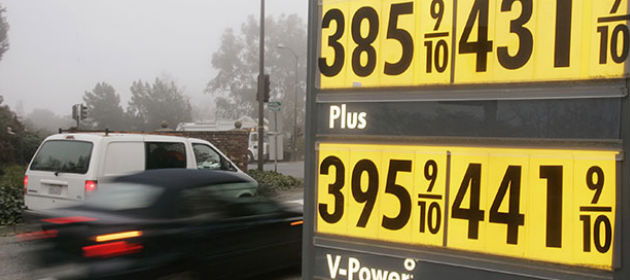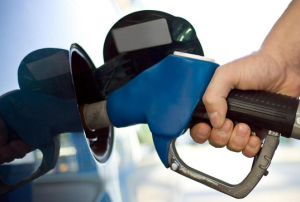Consumer Prices in U.S. Rise More Than Forecast on Fuel
 Courtesy of Bloomberg by Shobhana Chandra and Lorraine Woellert The cost of living in the U.S. rose in June by the most in four months as gasoline prices increased, a sign inflation is advancing toward the Federal Reserve’s goal.
Courtesy of Bloomberg by Shobhana Chandra and Lorraine Woellert The cost of living in the U.S. rose in June by the most in four months as gasoline prices increased, a sign inflation is advancing toward the Federal Reserve’s goal.
The consumer-price index increased 0.5 percent after a 0.1 percent gain the prior month, Labor Department figures showed today in Washington. The median forecast in a Bloomberg survey called for a 0.3 percent rise. The biggest advance in gasoline prices in four months accounted for about two-thirds of the gain the in the CPI. The core measure, which excludes food and fuel, rose 0.2 percent, matching the May gain and the survey median.
Some Fed policy makers, including St. Louis Fed President James Bullard, have expressed concern inflation is too low, raising the risk of an outright decline in prices that would sap the recovery. Price readings closer to the Fed’s goal will give the central bank the flexibility to move forward later this year with reductions in its monthly asset purchases designed to stoke the economy.
 “This is probably going to be a little bit comforting for some of the folks at the Fed who are worried about lower inflation,” said Omair Sharif, an economist at RBS Securities Inc. in Stamford, Connecticut, who correctly forecast the CPI. “Inflation’s still very subdued, still very well contained.”
“This is probably going to be a little bit comforting for some of the folks at the Fed who are worried about lower inflation,” said Omair Sharif, an economist at RBS Securities Inc. in Stamford, Connecticut, who correctly forecast the CPI. “Inflation’s still very subdued, still very well contained.”
Another report showed industrial production climbed in June by the most in four months, indicating manufacturing is improving heading into the second of half of the year. Output at factories, mines and utilities rose 0.3 percent, the Fed said.
The forecast for consumer prices was based on the median of 83 economists in a Bloomberg survey. Economists’ estimates ranged from no change to a gain of 0.6 percent.
The results included the biggest increase in clothing costs since August 2011 and higher prices for medical care, new cars and household furnishings.
Overall consumer prices increased 1.8 percent in the 12 months ended in June, more than projected and after a 1.4 percent year-over-year gain the prior month.
The core CPI rose 1.6 percent from June 2012, in line with projections and following a 1.7 percent advance in the prior 12 month period.
- Energy costs increased 3.4 percent from a month earlier. Gasoline prices jumped 6.3 percent, the most since February.
- Food costs rose 0.2 percent, reflecting higher prices for cereals and meats. Automobile prices increased 0.3 percent.
Higher prices are taking a bigger bite out of Americans’ paychecks. Today’s report showed hourly earnings adjusted for inflation were unchanged in June from a month earlier, after a 0.1 percent decrease the prior month. They were up 0.4 percent over the past 12 months.
Retailers may hold prices in check until demand accelerates. Retail sales climbed 0.4 percent in June, less than forecast, as American consumers kept their buying in check for goods other than automobiles, figures showed yesterday.
Pier 1 Imports Inc., a Fort Worth, Texas-based retailer of home décor items and furnishings, said revenue rose in its first quarter ended June 1 as it benefited from full-priced selling. Still, discounts remain an option to woo shoppers, it said.
Pier 1
“We respond that to the market pressures to make sure that we can keep our sales momentum going,” Chief Executive Officer Alexander Smith said on a June 20 earnings call with analysts. “So, if the economy stays broadly as it is then our margins are going to stay broadly where they are. If the economy gets worse then we’ll certainly have to pump up our promotional pricing.”
Rising expenses have prompted some companies to boost prices. La-Z-Boy Inc., a Monroe, Michigan-based furniture maker and seller, said leather costs have climbed. The company raised prices effective May 1 because it expects to pay $11 million to $13 million more for raw materials in fiscal 2014, Chief Financial Officer Louis Riccio said on a June 19 earnings call.
Still, limited overall price gains in the economy so far have given Fed officials more room to continue steps to spur growth and trim the unemployment rate.
Fed Chairman Ben S. Bernanke, in two days of testimony to Congress starting tomorrow, may shed more light on the central bank’s view of the economy and how policy makers may begin scaling back $85 billion in monthly bond purchases.
Fed’s Bernanke
“Highly accommodative monetary policy for the foreseeable future is what’s needed in the U.S. economy,” Bernanke said in response to a question after a July 10 speech in Cambridge, Massachusetts. He said he expects inflation to “come back up” closer to the Fed’s 2 percent goal.
Recent moves in oil and gasoline futures point to further energy price gains next month, Stephen Stanley, chief economist at Pierpont Securities LLC in Stamford, Connecticut, said in a note. The gains would shore up the price measures and soothe concerns of policy makers who think inflation is too low, he said.
The CPI is the broadest of three price gauges from the Labor Department because it includes goods and services. About 60 percent of the index covers prices consumers pay for services from medical visits to airline fares, movie tickets and rents.
Wholesale prices rose 0.8 percent in June, more than forecast and reflecting higher costs for energy and automobiles, data showed last week. Import prices fell for a fourth straight month in June as costs dropped for food, natural gas and motor vehicles.
Category: Featured, General Update










